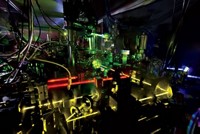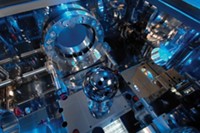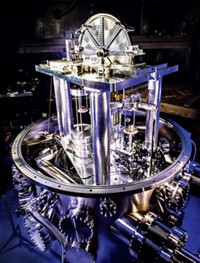Advertisement
Grab your lab coat. Let's get started
Welcome!
Welcome!
Create an account below to get 6 C&EN articles per month, receive newsletters and more - all free.
It seems this is your first time logging in online. Please enter the following information to continue.
As an ACS member you automatically get access to this site. All we need is few more details to create your reading experience.
Not you? Sign in with a different account.
Not you? Sign in with a different account.
ERROR 1
ERROR 1
ERROR 2
ERROR 2
ERROR 2
ERROR 2
ERROR 2
Password and Confirm password must match.
If you have an ACS member number, please enter it here so we can link this account to your membership. (optional)
ERROR 2
ACS values your privacy. By submitting your information, you are gaining access to C&EN and subscribing to our weekly newsletter. We use the information you provide to make your reading experience better, and we will never sell your data to third party members.
Materials
Boltzmann and Planck constants remeasured
Values will contribute to defining basic units of measure through fundamental constants instead of using physical objects
by Jyllian Kemsley
July 10, 2017
| A version of this story appeared in
Volume 95, Issue 28
NIST has announced more accurate measurements of the Boltzmann and Planck constants. The new values will contribute to an international effort to move away from defining basic units using physical objects and instead, starting in 2019, derive them from seven fundamental constants of nature. The kelvin, for example, is currently defined by measuring the triple point of water in a sealed glass cell. Going forward, metrologists want to define the kelvin in terms of the Boltzmann constant, which NIST researchers determined to be 1.3806410 × 10–23 J/K by measuring the degree of random motion of electrons in a resistor (Metrologia 2017, DOI: 10.1088/1681-7575/aa7b3f). Meanwhile, the kilogram is currently defined as the mass of a plum-sized cylinder of platinum-iridium alloy. Instead, metrologists want to define the kilogram in terms of the Planck constant. NIST scientists have now measured that constant’s value as 6.626069934 × 10–34 kg·m2/second by using a Kibble balance, formerly known as a watt balance, which balances the weight of a test object by passing a current through a coil suspended in a magnetic field (Metrologia 2017, DOI: 10.1088/1681-7575/aa7bf2).





Join the conversation
Contact the reporter
Submit a Letter to the Editor for publication
Engage with us on Twitter